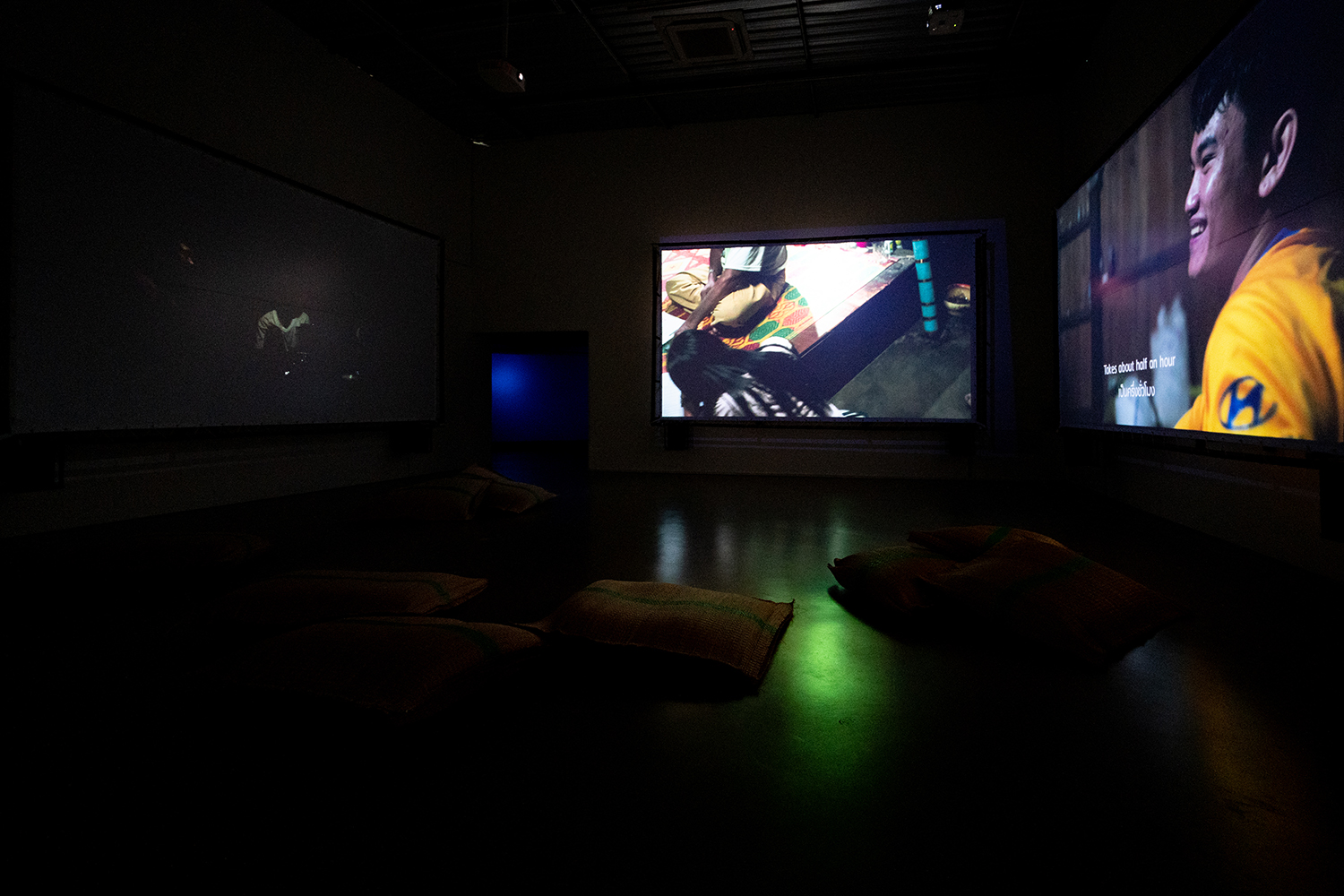THE EXHIBITION, THE LONGEST WAY ROUND IS THE SHORTEST WAY HOME, BY NONTAWAT NUMBENCHAPOL, TELLS THE STORY OF TA, A YOUNG MAN OF TAI YAI DESCEND, AND HIS JOURNEY BACK HOME TO APPLY FOR THE IDENTIFICATION CARD AFTER SIX YEARS OF BEING AWAY
TEXT: KANDECH DEELEE
PHOTO COURTESY OF GALLERY VER
(For Thai, press here)
It is more often than not that ‘travel’ becomes a conversation stimulator; a subject of storytelling, partly, because the nature of ‘traveling’ itself is a combination of the changing of places (traveling from one place to another) and time, which progresses and varies according to the different distances. Travel is a topic full of storytelling potential, simply because as space and time work their ways, other stories simultaneously unfold.
The exhibition, The Longest Way Round is the Shortest Way Home, by Nontawat Numbenchapol, tells the story of Ta, a young man of Tai Yai descendant, and his journey back home to apply for an identification card after six years of being away.

Nontawat presents the story using a series of video footage. He intertwines and projects them on four makeshift screens made out of fabric fastened on a bamboo frame, similar to those used in a local outdoor cinema screening. Three of the screens occupy three walls of the exhibition room, and the fourth one is situated further inside. Different footage of the moving images appear on the screens in varying sequences. Sometimes they were shown on one or two screens at a time. Sometimes, all the screens were filled with the captured footage. But there wasn’t a single time that the three screens were showing the same video at once. For example, if a screen shows a scene where people are helping Ta fix his motorcycle, another screen is simultaneously showing an image of the same bike already fixed. The story (or reality) was broken down into parts, as viewers’ focus varies. What’s undeniable is despite the difference in the details of the captured incidents, everything is all a part of Ta’s journey home.
I couldn’t help but think about the obstacles in the viewing experience inside the gallery’s space, and how they aren’t that much different from what Ta had to go through during his journey. We saw the transition from a plane, which offers the highest level comfort, to the less comfortable means of transportation such as a bus, a car, to riding a bike (that broke down in the middle of the trip) on a dirt road leading up to the village. This journey reflects the shift in development as Ta journeys through different areas. From the most civilized society where one can travel across borders within a matter of few hours, to the rural parts of the country that are physically and geographically challenging to access, not to mention more abstract concepts like opportunities, the economy, and dreams.

The artist presents the video footage along with the sounds recorded from the actual journey, with hardly any background music. There is only one scene where several minutes of music are added. It’s the scene where Ta was riding his motorcycle into the village at night, and appearing before the viewers’ eyes was the complete darkness that enveloped the surrounding landscape. It was as if the headlight was shone into the pitch-black void without anything or anyone in sight. The only sound the viewers could hear was the slow, instrumental music as the wordless tune kindled the feeling of loneliness from time to time. This particular scene is significant for many reasons. Not only was the scene was shown with music in the background, but it was shot in a long-take without a single shift of camera angle. Intuitively, viewers were beginning to understand the artist’s intention and certain special meanings he tried to convey.

When a house represents a person who lives in it, the dark, dirt road leading to the village reflects how the viewers were gradually taken closer into Ta’s life. Therefore, the motorcycle-riding scene is monumental, for it marks the end of the journey as the headlight flashed, and the image of Ta’s house came into view.
From a different perspective, this ‘journey home’ is the retrace of Ta ‘leaving’. If we were to reverse the whole journey, it would tell the story of Ta’s departure from his hometown. The darkness that consumes the entire landscape and blinds the way was the metaphor for Ta’s emotional and mental state when he was deciding to leave the place where he was born where opportunities were scarce, and dreams were impossible. Leaving his home to become an immigrant labourer in Thailand is no different from a journey to a brighter light of hopes and dreams.

Perhaps, what sums up this journey is the exhibition’s title itself. The Longest Way Round is the Shortest Way Home implies that the shortest way may not be the best way. We have witnessed the obstacles and struggles in Ta’s life, and it seems like he was taking a long detour to success. But from the interview included throughout the exhibition or even certain traits we observed from Ta’s personality and point of view, we came to realize that the longer way he was being forced to take wasn’t an easy one. This ‘longer’ way he’s walking isn’t just going to take him to the destination later than most people. It’s giving him the knowledge, refining his thought process and attitudes, offering him invaluable experiences. So yes, perhaps, the shortest way isn’t always the best way.
The Longest Way Round is the Shortest Way Home by Nontawat Numbenchapol. Gallery Ver: 11th July – 22nd August 2020.






